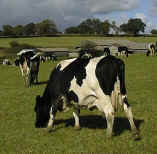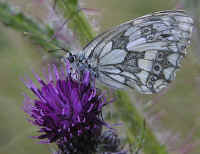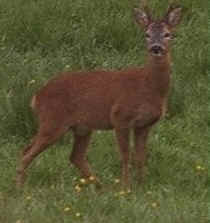. |
| 5. Grasses are astonishingly tough and hardy |
 |
A
variety of grasses can be found from the freezing poles of the earth all the way to the
baking equator. They can survive in the most inhospitable of conditions, from the extreme
cold of the tundra, to shifting sand dunes and salty water. |
| There
are growing points at each of the grass stem nodes, as well as at the base of the leaf
blades (more on grass structure here). As a result, grasses can tolerate levels of
grazing and trampling that would kill many other plants. |
 |
. |
| 6. The multi-billion dollar global companies which have
developed based on football and other outdoor sports, ultimately depend on the humble
grass plant! |

|
Because
of their spreading, ground-covering ability and tolerance to trampling, grasses provide
the basis for all of our field sports, from football to rugby and from polo to lawn bowls.
|
| Artificial grass surfaces, such as
Astroturf, have admittedly been developed. However, they lack many of the properties of
grass, probably most importantly, its softness when landed upon at high speed! Artificial
turf will tend to give painful friction burns in equivalent situations. A whole science of groundsmanship has
developed around the careful cosseting of turf pitches for important matches. |
. |
| 7.
There are so many different species and varieties of grass, that there is at least
one to fit every type of habitat and growing conditions. |
| Many grasses interbreed naturally, producing
hybrid species and even genera. |
 |
They
are easily bred artificially to produce higher yielding varieties. Different types can
also be bred to suit specific local climatic and soil conditions. |
| More information from IGER The
Institute of Grassland and Environmental Research |
. |
| 8. For most of the world, grasses provide a main part of
people's diet. |
| Wheat provides flour for bread, pastas and pastries. Corn is
the staple in many southern parts of the world. In Asian regions, rice is the most
important source of starch for people. In the year 2000, 208 million
hectares (1 hectare = 2.5 acres) of wheat were planted worldwide (Wheat
worldwide pdf document). |
. |
| 9. Caterpillars and grain weevils, deer and pandas also grow
big and strong eating grasses. |
 |
Grasses
are the main food of an amazing range of herbivores. The caterpillars of many butterflies, such
as this Marbled White (left), feed on grasses (wild varieties rather than cultivated
ones). |
| Grass seeds are not only prized as food by humans. Keepers
of grain stores have a hard time preventing hosts of other animals, from grain weevils to
rats, from gorging on the stored bounty. |
Larger herbivores, such as deer, include grasses in their
diet, while Pandas depend entirely on bamboo for sustenance. |
 |
 |
Having such a narrow choice of food can provide problems
for Pandas. Many
bamboo species have a strange synchronization of flowering, where all the bamboo plants in
a given locality will flower at the same time. This takes place in regular cycles which
can last from 10 - 120 years, depending on species. Once the plants flower, they all then
die. It may take a while before new plants are sufficiently developed to feed the local
pandas again. |
|

